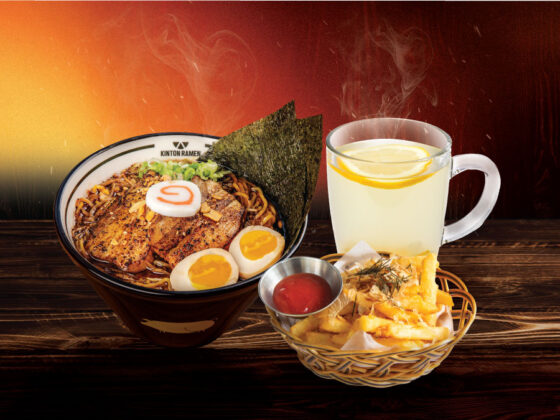Spring is the perfect time to head outdoors for foraging. Vv’s Libby Roach has the scoop on how and where to reap the advantages of the short scavenging season.
While no one would argue the fact that Canadian winters span a few months too long, the same might be said about summer – for foragers, at least.
ADVERTISEMENT |
Foraging is gaining popularity these days, with locavores and gourmands alike heading into Canada’s pristine parks and forests for the brief opportunity to dig up jewels of the season. Like High Park’s short-lived cherry blossoms, these natural beauties fall under the blink-and-you-miss-it category, which only adds to the allure of foraging.
While autumn holds a few precious weeks of decent scavenging, spring is the prime time to get outside, connect with nature and reap the benefits of getting your hands dirty. A quick peruse of the local farmers market reveals how expensive some of these ingredients can run you (fiddleheads have been known to fetch $18/lb). So kill two birds with one stone; save your money and burn some calories while collecting some of nature’s bounty for a truly impressive feast.
Most of these gastronomical goods grow in woods from coast to coast. Check your local foraging authority for more resources, and pick up a guide book (with photos) if you’re new to the game.
From harmless and abundant to risky and rare, here’s Vv Magazine’s guide to foraging.
Flowers
Gasp! A weed. Yes, the ubiquitous dandelion that wrecks your perfect golf green lawn is also reliable, edible and extremely versatile. Make sure you pick yours from somewhere that hasn’t been sprayed with pesticides and you’re pretty much in the clear. Dandelions can be used for both their leafy greens and their yellow puffy flowers, which can fermented into a nice wine. If you snag one by the roots, you can brew a hot drink similar to coffee. Other edible flowers include daisies, clover, pansies and lavender.
ADVERTISEMENT |
Fruits
Canada is home to the sweet stuff, too. Stalky rhubarb, a generous perennial, pairs beautifully with our native wild strawberries and raspberries. Other lesser-known berries can make for a killer jam, including chokecherries, mulberries, gooseberries, cloudberries, elderberries, red currants and, of course, wild blueberries. Most fruits freeze quite well, so consider snapping up extras for later use.
Ramps (wild leeks)
Leafy and delicious, wild leeks grow in clusters in dense forests from late April to early May. You can pull out the entire plant, but you likely won’t need much to make an impact in your dish. The entire plant is edible, so save the tender leaves for some zippy salad greens, too.
Fiddleheads (ferns)
One of the more popular foraging finds, fiddleheads, the budding beginnings of the leafy fern plant, pop up in early spring. Look in soggy, wooded areas for these tasty, slightly bitter greens. Always remove the brown beardy bits and then wash thoroughly and blanch before using. Add fiddleheads to any recipe that calls for dark greens, or eat on their own after a quick pan sear with garlic butter.
Mushrooms
Arguably the finest reason to forage, Canada is home to some fabulous fungi – notably morels, which fetch top dollar by industry chefs. Morels can be found in sparse forests and escarpments while wild mushrooms like chanterelles and puffballs prefer a little more coverage. Always make sure your mushrooms are properly identified (as some are extremely poisonous) and never eat raw. Morels make for killer additions to soups, salads and risottos, while chanterelles are lovely on top of pizzas or with eggs.
ADVERTISEMENT |
Some very important rules before you go:
– Never eat something you’re not absolutely sure of.
ADVERTISEMENT |
– Never over pick. Leave some for next time.
– Always wash (and sometimes blanch or cook) your ingredients first.
– Don’t pick anything from unclean areas (where dogs frequent or near industrial areas) or on private property. Remember: Toronto has been pesticide-free for just six years, which means there’s likely still chemicals in public parks (10 to 15 years is then considered safe.
ADVERTISEMENT |
For more information on foraging, be sure to check out the Wild Foragers Society on Facebook or this handy guide book.
What are your tips and tricks to foraging in the city? Let Vv Magazine know in the comments below or tweet us @ViewTheVibe.








